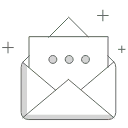What is a Ventricular Septal Defect in Infants?
A ventricular septal defect (VSD) is a congenital heart disease in which the child is born with a hole in the wall of the muscle that separates the heart’s two chambers i.e. the left and the right ventricles. The defect can occur anywhere in the muscle (septum) that divides the two sides of the heart and it can be present in several locations in the wall between the ventricles. The severity of VSD and how it’s treated depends on the size of the hole and its location within the septum.
How does the Ventricular Septal Defect affect the Heart?
To understand Ventricular septal defect, we need to know how a normal heart functions. The left side of the heart will pump the blood only to the body, and the right side of the heart will pump blood only to the lungs. But in a child with a hole in the heart, the blood travels from the left side of the heart (left ventricle) to the right side of the heart (right ventricle) and out into the lung arteries. This causes the pressure in the blood vessels of the lungs to increase because more blood than normal is being pumped there.
If the hole is large, the extra blood that is pumped into the lungs arteries makes the heart and lungs work harder and the lungs become congested. This can make the heart work harder than it should and, over time may lead to muscle enlargement and HEART FAILURE.
The other complications of Ventricular Septal Defect are:
- Pulmonary hypertension: Increased blood flow to the lungs due to the VSD will cause high blood pressure in the lung arteries (pulmonary hypertension), which can damage them permanently. This complication will cause reversal of blood flow through the hole (Eisenmenger syndrome).
- Endocarditis: This heart infection is a rare complication
- Abnormal heart rhythms (ventricular arrhythmias)
- Heart valve problems
- Lung problems
- Poor growth and development
How does the Ventricular Septal Defect affect your child?
If the hole is small, it will not cause symptoms because the heart and lungs will not have to work harder. A small hole in the heart may not cause any medical problems and it closes naturally on its own.
If the defect is a larger hole, the child may breathe faster and harder than normal. The symptoms may not occur until several weeks after birth. This condition may cause higher pressure in the heart or reduced oxygen to the body. In time this will cause permanent damage to the lung blood vessels. Therefore, medium or larger holes in the heart may need surgical repair early in life to prevent complications.
What is the Ventricular Septal Defect Symptoms?
The symptoms of having a hole in the heart of a child depend on the size and where it is located along the septum. Many children seem to have no symptoms. They grow and gain weight normally.
The Symptoms of a ventricular septal defect are:
- Difficulty gaining weight
- Shortness of breath or the murmuring of the heart when heard using a stethoscope
- Babies may experience profuse sweating during feeding
- Frequent respiratory infections
- Rapid heart rate
- Poor weight gain
- Difficulty breathing
- Pale skin
- A bluish skin color around the lips and fingernails
If your baby or child develops any of these symptoms, contact your doctor immediately.
What are the Causes of Ventricular Septal Defects?
Ventricular septal defects in infants are formed when the septum doesn’t completely seal while a baby is developing in the womb. The tendency to develop VSD may be genetic and a hole in the heart could occur with genetic problems such as Down syndrome.
In some cases, the causes of a VSD are severe blunt trauma to the chest. For example, a serious car accident or repeated trauma to the chest may cause a hole in the heart to form. It is also possible for a hole to form later in life, usually after a heart attack or after a complication of certain heart procedures. The congenital heart defects arise from problems early in the heart’s development.
What are the Types of Ventricular Septal Defect?
There are four basic types of VSD, the type your child has depends on which part of the wall between the ventricles is involved. They are as follows:
-
Membranous VSD: This type of VSD is commonly used in operation as most membranous VSDs do not close spontaneously.
-
Muscular VSD: A large number of these muscular VSDs close spontaneously and do not need surgery.
-
Atrioventricular canal type VSD: A VSD which is associated with atrioventricular canal defect, this VSD is located underneath the tricuspid and mitral valves.
-
Conal septal VSD: This is a rare VSD which occurs in the ventricular septum just below the pulmonary valve.
Want more clarification about medical expense & treatment plan?
Plan Your ventricular septal defect Surgery In India
Get a Free Doctor's OpinionWhatapp UsHow are Ventricular Septal Defects Diagnosed?
Most ventricular septal defects are first identified by a child’s pediatrician during a routine checkup. The blood passing irregularly from the left ventricle to the right causes a loud murmur noise which can be heard with a stethoscope by listening to the heart. Some ventricular septal defects may be identified on a fetal ultrasound exam before a baby is born.
If your doctor suspects that your child may have VSD, further tests will be required to identify the size and location of the septal hole. Common tests for VSD include:
- Chest X-ray
- EKG
- Echocardiogram (ECHO)
What are the Treatment Options for Ventricular Septal Defect?
If your child has a ventricular septal defect, your pediatric cardiologist will want to carefully monitor him or her to make sure that the condition is not causing damage to the heart. Treatment will depend on your child’s age, symptoms and the size and location of the hole within the septum. You will likely need frequent appointments and repeated tests for this condition.
Medication:
If your child has symptoms such as shortness of breath or trouble nursing, then they will be given medications to help to treat these symptoms. A small hole may not cause any medical problems and it closes naturally on its own. However, there is no medicine or other treatment that will make the hole smaller or close any faster than it might do naturally.
In case if your child has symptoms despite the medications or if the hole is too large to close on its own, surgery should be performed to close it. However, some holes should be closed regardless of their size, because of their position within the heart wall.
VSD Closure Surgery:
Children born with a more serious case of VSD i.e a larger hole in the heart will need surgical repair in the first few months after birth to prevent long-term complications. In this case, ventricular septal defects are usually repaired with open-heart surgery by a pediatric cardiac surgeon. In some situations, minimally invasive surgical approaches may be used. This type of surgery is usually a low-risk and most children are discharged within 3-5 days after surgery.
During this surgery, a surgeon makes an incision on the chest and divides the breastbone to reach the heart. A heart-lung machine is then used to pump blood and the heart-lung machine will function as the lungs during the surgery. Then the surgeon patches the hole between the ventricles. In time, the child’s own cells grow over the patch, anchoring it in place even more.
The goal of surgery is to close the septal opening before the lungs are damaged. Surgery will also help babies who have trouble feeding and gain a normal amount of weight.
Cardiac Catheterization:
VSD may be fixed by cardiac catheterization. In this test, a tool called a septal occluder is used with a catheter. The doctor guides the catheter to the heart through the blood vessels. Once the catheter is in the heart, the doctor closes the defect with the septal occluder. Only certain types of VSDs may be closed in this method. This procedure should be done in centers that have experience in doing transcatheter VSD repair.
What is the Ventricular Septal Defect Cost in India?
The cost for the treatment of VSD in India is USD 6850 which is 70% – 90% cheap than most western countries like the USA & United Kingdoms due to the low-cost infrastructure and medical services while there are no compromises in the quality of treatment. We ensure that our patient gets the best medical services and treatment at a reasonable & affordable cost. You can contact us or get a free consultation from a cardiac surgeon to plan the treatment of your child in India by filling the form below or email us at care@treatmentpossible.com. You can also reach us via WhatsApp at +91 89288 11870
Living with a Ventricular Septal Defect:
Depending on the location of the hole, the pediatric cardiologist will examine your child periodically in order to look for problems, such as a leak in the aortic valve. In some cases, older children with small VSDs may also require surgery, if they develop a leak in their heart valve.
After VSD surgery, a pediatric cardiologist will examine your child regularly. The cardiologist will make sure that the heart is working normally. Usually, no medicines or additional surgery are needed. Older children can be active without getting too tired and should be fully recovered within a few weeks. Most children who have surgery for VSD should be able to do normal activities. Their activity levels, appetite, and growth return to normal. If the hole in the heart is small or it has been closed with surgery, your child may not need any precautions regarding physical activity and can participate in normal activities without any risk.
VSD Surgery at Treatment Possible:
Treatment Possible is associated with the Best Cardiac Surgeon for VSD surgery in India who are experienced in operating complex cases and ensure the highest success rate. We only work with Top 10 hospital for Ventricular Septal Defect Surgery in India that are equipped with OT that are compatible with complex Cardiac Surgeries.
Our understanding of the Indian Healthcare market and our valued relation with best hospitals for VSD surgery in India enables us to maintain the cost that are reasonable, affordable and transparent. The Ventricular Septal Defect surgery cost in India through Treatment Possible can be 10-20% lower than similar companies in India and 50-60% cheaper than in other countries.
You can also send your medical reports for VSD surgery to care@treatmentpossible.com for free opinions and suggestions from The Best Cardiac Surgeon in India with the hassle-free setup of post-operative recovery care, medical travel & stay during the Medical treatment. No matter what the health condition, you always get good healthcare options and cost advantage from Treatment Possible.
Our Services
From Treatment To Recovery, We Are Always There With You!

Medical Visa Letter
We provide a Medical visa letter for which we require the scanned passport copies of the patient and attendant.

Arrange An Appointment With A Surgeon
We arrange for the appointment with the surgeon, confirm for the hospital room and operation theatre (if required)

Post Surgery Follow Up
We help you to fix your telephonic appointment for future follow-ups

Complimentary Pickup
We arrange for complimentary pickup and drop services from the airport.

All The Necessary Arrangements
We arrange for hospital admission, forex exchange, sim card and local assistance

No Need To Worry About Essential Expenses!
We help in sorting out the hospital bill, return ticket, medicines and other essential purchases.
